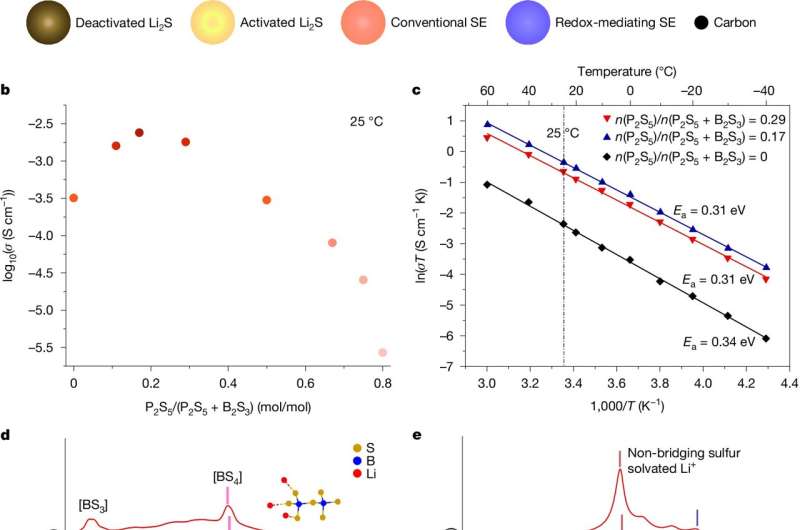An international team of engineers and materials scientists has developed a lithium-sulfur battery capable of retaining 80% of its charge capacity after 25,000 cycles. Their paper is published in the journal Nature.
To make batteries smaller and lighter, engineers continually look for new materials. Such efforts tend to focus on the electrodes where lithium is held by other materials. Finding a better material to hold the lithium could result in an overall lighter and more compact battery.
One of the more promising materials is sulfur, due to its quality, abundance and low cost. Unfortunately, some of sulfur’s reactions with lithium lead to ion loss, and worse, it tends to expand, leading to degradation and a short battery life.
In this new study, the research team working in China found a way around such problems and built a battery that can hold up longer than other batteries over thousands of recharge cycles.
The approach uses sulfur to create a solid electrode—its porous atomic structure allows for ion diffusion without movement of intermediaries. To create the electrode, the team created a glass-like mixture made from sulfur, boron, lithium, phosphorus and iodine. The latter proved to be the key; it helped speed the movement of electrons through the redox reactions, which led to faster reaction speeds.

The result was a battery that could be charged quickly, even when exposed to high temperatures. But more importantly, the battery was capable of retaining an 80% charge capacity after undergoing 25,000 charge/recharge cycles—a noticeable improvement over typical lithium-ion batteries, which tend to degrade after just 1,000 cycles.
The researchers suggest more work is required to improve the energy density and perhaps to find other materials to use for the mix to ensure a low-weight battery.
More information:
Huimin Song et al, All-solid-state Li–S batteries with fast solid–solid sulfur reaction, Nature (2025). DOI: 10.1038/s41586-024-08298-9
© 2025 Science X Network
Citation:
Lithium-sulfur battery retains 80% charge capacity after 25,000 cycles (2025, January 20)
retrieved 20 January 2025
from https://techxplore.com/news/2025-01-lithium-sulfur-battery-retains-capacity.html
This document is subject to copyright. Apart from any fair dealing for the purpose of private study or research, no
part may be reproduced without the written permission. The content is provided for information purposes only.

